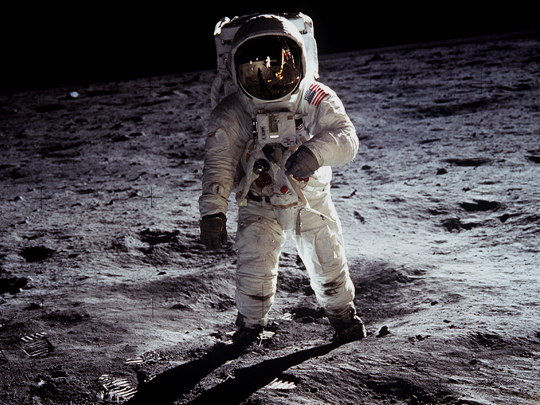NASA / CC-BY-SA-3.0 / GFDL
1 – Apollo 11 Lands on the Moon with Neil Armstrong, Buzz Aldrin & Michael Collins
Apollo 11 was the first spaceflight that landed humans on the Moon. Mission commander Neil Armstrong and pilot Buzz Aldrin landed the lunar module Eagle on July 20, 1969.
Armstrong became the first person to step onto the lunar surface six hours later on July 21, while Aldrin joined him about 20 minutes later.
They spent about two and a quarter hours together outside the spacecraft and collected 21.5 kg of lunar material for return to Earth. Michael Collins piloted the command module Columbia alone in lunar orbit.
Armstrong and Aldrin spent just under a day on the lunar surface before rendezvousing with Columbia in lunar orbit. They returned to Earth and landed in the Pacific Ocean on July 24.
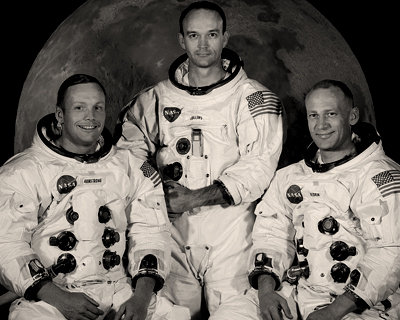
It was launched by a Saturn V rocket from Kennedy Space Center in Merritt Island, Florida, on July 16.
The Apollo spacecraft had three parts: a command module, the only part that landed back on Earth; a service module, which supported the command module with propulsion, electrical power, oxygen, and water; and a lunar module.
Broadcast on live TV to a worldwide audience, Armstrong stepped onto the lunar surface and declared as “one small step for man, one giant leap for mankind.”
Apollo 11 effectively ended the Space Race and fulfilled a national goal proposed in 1961 by U.S. President John F. Kennedy: “before this decade is out, of landing a man on the Moon and returning him safely to the Earth.
2 – Francis McCloskey, a Catholic Civilian, Dies – Considered the First Death of ‘The Troubles’
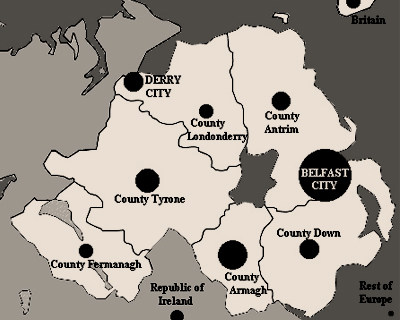
Following on from the Peoples Democracy march of 1st January 1969 from Belfast to Derry and the subsequent rioting in Derry’s Bogside and other towns in Northern Ireland.
The Northern Ireland Civil Rights Association and its supporters were openly condemned by the Government of Northern Ireland as being manipulated by Republicans and socialists.
The government openly supported the so-called loyalist institutions when they demanded the right to parade through towns and villages where the population was overwhelmingly Catholic.
At the same time, it ordered the Royal Ulster Constabulary (RUC) to robustly put an end to demonstrations for civil rights and social reform.
In April of 1969, RUC officers trashed the home of Derryman Sammy Devenny, and savagely beat Devenny and his daughters so badly that he never recovered from his injuries and died on 17th July.
On July 14, 1969, the Orange Order decided to walk through the Catholic village of Dungiven.
During the inevitable rioting, the RUC brutally beat Francis McCloskey, a 67-year-old Catholic resident, with his injuries leading to his death.
McCloskey’s death is considered the first Catholic civilian killed in Northern Ireland’s troubles.
3 – Woodstock Music Festival Takes Place
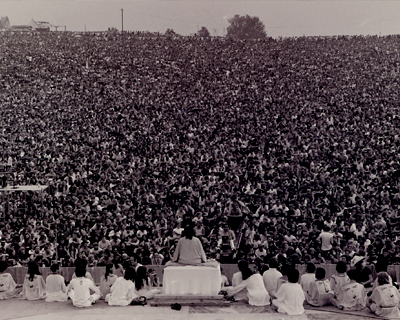
Woodstock was a music festival attracting an audience of over 400,000 people, scheduled over three days on a dairy farm in New York state from August 15 to 17, 1969.
However, it ran over four days to August 18.
Billed as “An Aquarian Exposition: 3 Days of Peace & Music”, it was held at Max Yasgur’s 600-acre dairy farm in the Catskills near the hamlet of White Lake in the town of Bethel.
During the sometimes rainy weekend, 32 acts performed outdoors before the 400,000 people in attendance.
It is widely regarded as a pivotal moment in popular music history, as well as the definitive nexus for the larger counterculture generation.
Rolling Stone listed it as one of the 50 Moments That Changed the History of Rock and Roll. The event was captured in the Academy Award-winning 1970 documentary movie Woodstock.
4 – Manson Family Commits Tate-LaBianca Murders
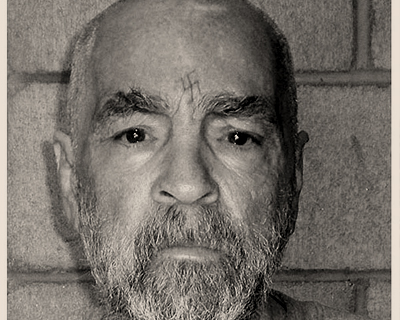
The Tate murders were the notorious and brutal killings of five people by members of the Manson Family on August 8, 1969.
Four members of the family (Tex Watson, Susan Atkins, Linda Kasabian & Patricia Krenwinkel) invaded the home of the married couple, actress Sharon Tate and director Roman Polanski at 10050 Cielo Drive in Los Angeles, California.
They murdered the eight-months-pregnant Tate, along with friends Jay Sebring, Wojciech Frykowski & Abigail Folger, who were visiting at the time.
18-year-old Steven Parent, who was visiting the property’s caretaker, was killed as he was departing the premises.
Polanski was away working on a film in Europe. Tate’s blood was used to write the word PIG on the home’s front door.
The murders were carried out under the direction of Charles Manson. Manson, an aspiring musician, had previously looked for a recording contract with producer Terry Melcher, who previously rented the house.
Melcher snubbed Manson. In retaliation, Manson ordered the attack, thinking that Melcher still owned the house, but it had, by then, been rented to Polanski.
The next day, supermarket executive Leno LaBianca and his wife were killed in a similar fashion. A fork was used to carve the word ‘WAR’ on his belly & was left sticking out of his corpse.
This time, Manson took part in the slaughter. It would take the authorities nearly five months to track down Charles Manson and his so-called Family.
5 – Millions Protest During Vietnam Moratorium Day
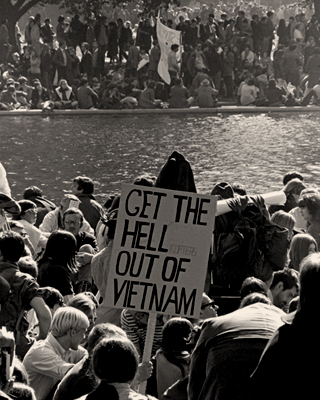
The Moratorium to End the War in Vietnam was a massive demonstration across the United States against the Vietnam War.
It took place on October 15, 1969, with millions participating throughout the world.
Boston had the largest turnout, with about 100,000 attending a speech by anti-war Senator George McGovern.
Future U.S. President Bill Clinton, organized and participated in the demonstration in England, which would become an issue in his Presidential campaign.
The first nationwide Moratorium was followed on November 15, 1969, by a second massive Moratorium march in Washington, D.C., which attracted over 500,000 demonstrators against the war.
This was preceded by the March against Death on November 13, with over 40,000 people parading silently down Pennsylvania Avenue to the White House.
Each bearing a placard with the name of a dead American soldier or a destroyed Vietnamese village. The marchers finished in front of the Capitol building, where the placards were placed in coffins.
There were also be demonstrations in Melbourne, Australia. held on May 8, 1970, with over 100,000 people taking to the streets in Melbourne alone.
Across Australia, it was estimated that 200,000 people were involved. There would be two further demonstrations against the Vietnam War across Australia in 1970.
6 – Colonel Muammar al-Qaddafi Deposes King Idris of Libya
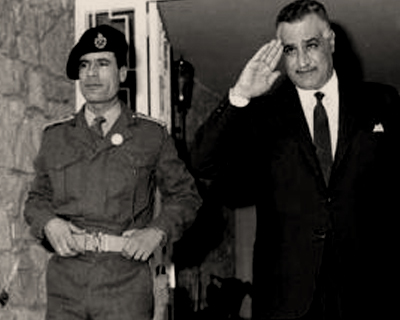
The al-Fateh Revolution, or the 1 September Revolution, was a military coup d’état executed in Libya by the Free Officers Movement.
This was a group of rebel military officers led by Colonel Muammar Gaddafi, which led to the overthrow of King Idris of Libya.
On 1 September 1969, a group of about 70 young army officers known as the Free Officers Movement and enlisted men mostly assigned to the Signal Corps seized control of the government and, abolished the Libyan monarchy.
The coup was launched at Benghazi; and, within two hours, the takeover was completed.
Army units quickly rallied in support of the coup and, within a few days, firmly established military control in Tripoli and elsewhere throughout the country.
The popular reception of the coup, especially by younger people in the urban areas, was enthusiastic. No deaths or violent incidents related to the coup were reported.
The Free Officers Movement, which claimed credit for carrying out the coup, was headed by a twelve-member directorate that designated itself the Revolutionary Command Council (RCC).
This body constituted the Libyan government after the coup. In its initial proclamation on 1 September, the RCC declared the country to be a free and sovereign state called the Libyan Arab Republic.
7 – The Chappaquiddick Incident
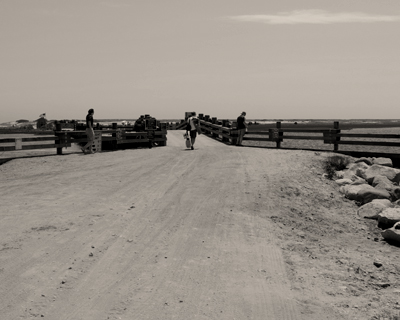
The Chappaquiddick incident was a single-vehicle automobile accident on Chappaquiddick Island, Massachusetts on July 18, 1969. The incident involved U.S. Senator Ted Kennedy.
His 28-year-old colleague, Mary Jo Kopechne, reportedly drowned, although the testimony of a diver would indicate suffocation from lack of oxygen instead.
According to his own testimony, Kennedy accidentally drove his car off a one-lane bridge and into a tidal channel before swimming free, leaving the scene, and not reporting the accident for nine hours.
The next day, Kopechne’s body and the car were both recovered by divers.
Kennedy pleaded guilty to a charge of leaving the scene of a crash after causing injury and later received a two-month suspended jail sentence.
The Chappaquiddick incident became a national scandal, and likely influenced Kennedy’s decision not to campaign for President in 1972 and 1976.
8 – The Football War Between El Salvador & Honduras
The Football War, or 100 Hours War, was a brief war fought by El Salvador and Honduras in 1969.
The cause of the war was economic in nature, namely issues concerning immigration from Honduras to El Salvador.
The existing tension coincided with rioting during a qualifier for the 1970 FIFA World Cup.
The war began on 14 July 1969, when the Salvadoran military launched an attack against Honduras.
The Organization of American States (OAS) negotiated a ceasefire on the night of 18 July, which took full effect on 20 July. Salvadoran troops were withdrawn in early August.
Despite a formal peace treaty, a decision by the International Court of Justice, the support of the OAS, and more than forty years have passed, the dispute remains active.


